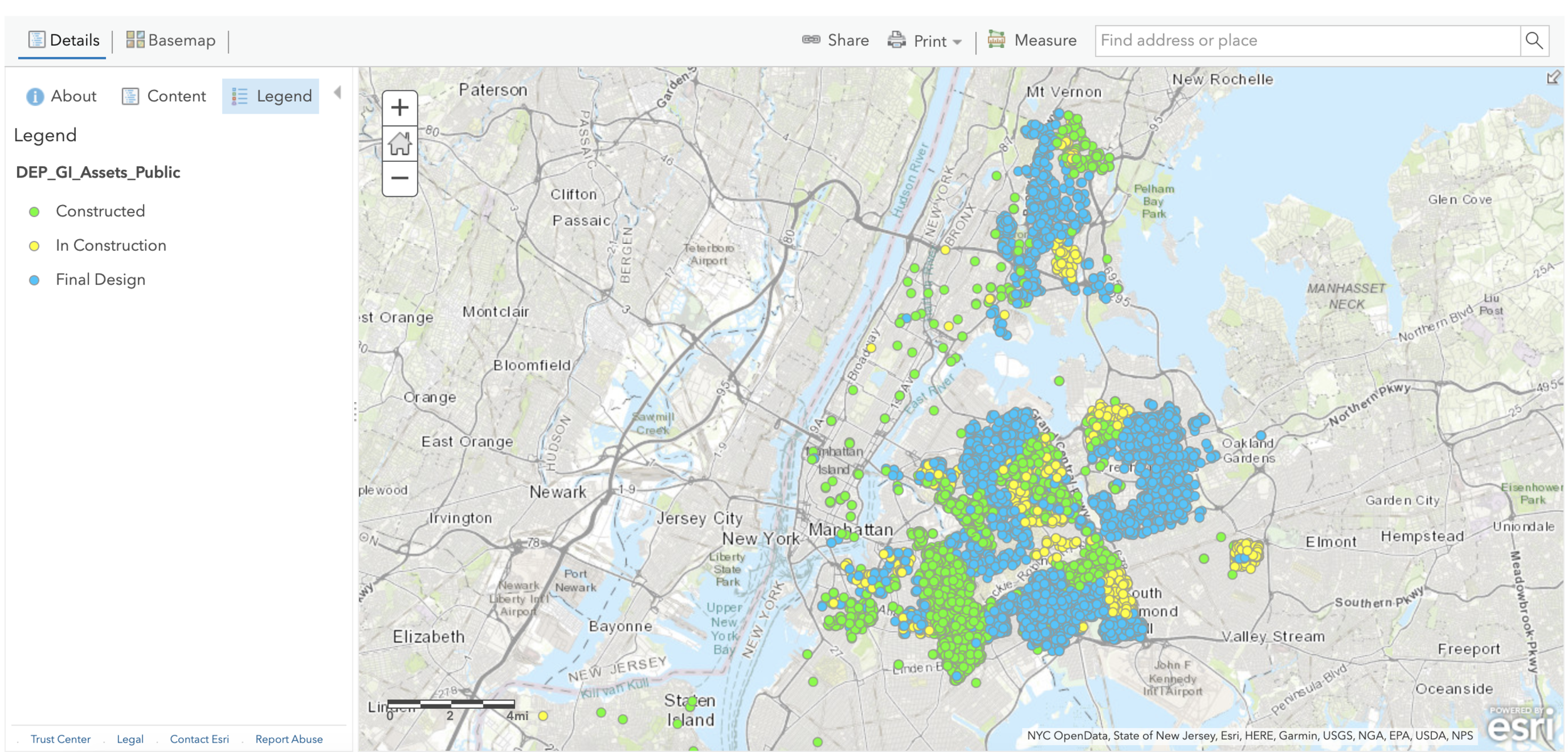For the Arts of Noticing ongoing assignment, I am intersted in observing swales, or as NYC (Department of Environmental Protection) DEP calls them, Rain Gardens. The city came up with a green infrastructure plan in 2010 and started bioswale pilots in 2011 as a form of green infrastructure to “manage stormwater and improve water quality in local waterways.” According to their website, it is a cost-effective and sustainable way to:
Beautify neighborhoods
Purify air
Reduce temperature during hot weather
Improve street drainage
Reduce puddles and ponds
I’m interested to see if I can feel these things during my observations. Most importantly, they are designed to re-absorb rain water into the ground naturally without flowing into the sewer system.
NYC has constructed 4,000 rain gardens across the city and this year is launching a stewardship and signage program.
Diagram of how rain garden are designed
I’m particularly interested in these areas as ecosystems because of my background in public policy and interest in civic tech and urban spaces. Two general topics that interest me are social infrastructure and digital infrastructure. I have started referring or conceiving of the projects that combinations of these as invisible infrastructure. This is a term that has been used in other social science settings [link to paper], but not quite in this way. I’m still figuring out if this definition makes sense and exactly how to define it in these terms
Rain Gardens interest me because they are literally invisible infrastructure and more or less fit the definition I have started to craft: they are partially digital (the city collects data on them and real-time data during storms) and could be considered social infrastructure akin to parks and recreation areas.
This reminds me of the way the Incas built Machu Picchu - 60% of construction is actually underground which is why it hasn’t slidden off of the mountain it is perched on and the natural fountains still run after 500 years.
This is a map of the green infrastructure around NYC
I plan to choose one of the sites near my apartment







